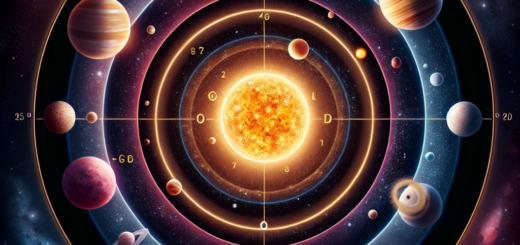Groundbreaking Astronomical Find Reveals Secrets of the Cosmos
Astronomy has long been a field of study that captivates the imagination and pushes the boundaries of human knowledge. From the discovery of planets outside of our solar system to the detection of gravitational waves, each new breakthrough brings us closer to understanding the vast and mysterious universe that surrounds us. Recently, a groundbreaking astronomical find has revealed new secrets of the cosmos that have left scientists and researchers in awe.
The discovery, made by a team of astronomers using the powerful Atacama Large Millimeter/submillimeter Array (ALMA) in Chile, involves a distant galaxy known as MACS1149-JD1. Located over 13.3 billion light-years away, this galaxy is one of the most ancient and distant ever observed. What makes this find truly remarkable is the detection of the galaxy’s oldest known stars, which formed just 250 million years after the Big Bang.
This finding is significant because it provides valuable insight into the early stages of galaxy formation and evolution. By studying these ancient stars, astronomers can better understand the processes that led to the creation of galaxies and the formation of the first stars in the universe. This information is crucial for piecing together the timeline of cosmic history and gaining a deeper understanding of how our universe came to be.
In addition to shedding light on the origins of galaxies, the discovery of MACS1149-JD1 also has implications for the study of dark matter and dark energy. These mysterious substances make up a majority of the universe’s mass and energy, yet their exact nature remains elusive. By studying ancient galaxies like MACS1149-JD1, astronomers hope to uncover clues about the role that dark matter and dark energy played in shaping the cosmos.
Furthermore, the detection of such ancient stars challenges our current understanding of star formation. The fact that stars were able to form so soon after the Big Bang suggests that the process may have been more rapid and efficient than previously thought. This has important implications for our understanding of how stars and galaxies evolve over time, and could lead to new insights into the nature of the universe.
Overall, the groundbreaking astronomical find of MACS1149-JD1 has opened up new avenues of research and exploration in the field of astronomy. By studying the oldest known stars in the universe, astronomers are gaining valuable insights into the early history of galaxies, the role of dark matter and dark energy, and the process of star formation. As our technology and understanding of the cosmos continue to advance, we can only imagine what other secrets of the universe await us just beyond the stars.













